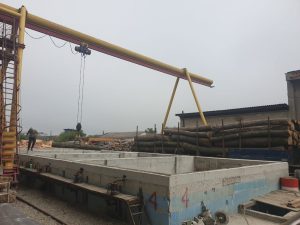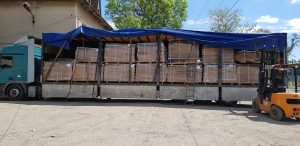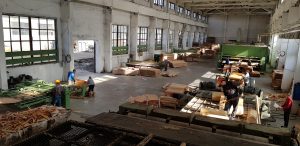
Veneer production
Our successful veneer operation is conditioned by the three principles:
- Suitable logs supply;
- The application of suitable processing and manufacturing techniques;
- Efficient marketing program.
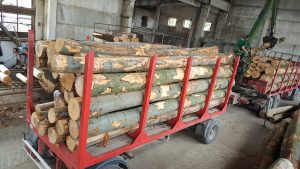
LOG PRE-CONDITIONING
For producing high quality veneer we select the best wood material that’s the trees of the tall variety with straight trunks and minimum of internal and external defects. All the logs destined for veneer production have the shape of true cylinder, free of mould and have low frequency of knots, bumps and any other distortions which predetermines the larger yield of higher grade veneers.
.
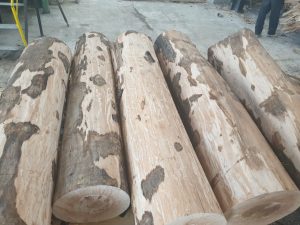 STEAMING AND DEBARKING
STEAMING AND DEBARKING
Before starting the log peeling process we soften the wood fibers by placing it into the pools and cooking it in hot water. The logs are soaked in 50-70°
temperature water. This plasticises the wood and knots, enables an easy peeling of the log and predetermines better smoothness and tightness of veneer.
Moist and warm logs are thoroughly measured and cut to an appropriate length. The barks are removed with a rotating pole shaver which causes the least damage to the log ends.
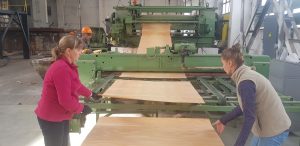 VENEER PEELING AND CLIPPING
VENEER PEELING AND CLIPPING
For rotary cut veneer production we use a lathe which removes a continuous thin ribbon of wood from the periphery of a peeler log. We apply a spindled lathe in our manufacturing process. This type of lathe uses spindles or ‘chucks’ to hold the log in position and to rotate it against the knife. It is a very reliable method and a very effective way to produce high quality veneer, even at very high production speeds. Rotary cut yields veneer with a broad grain pattern. As the veneer ribbon leaves the lathe, it is transported along a conveyor and cut into smaller, more manageable veneer sheet widths. At the clipping stage various defects including rotten areas, knots and other damages are removed.
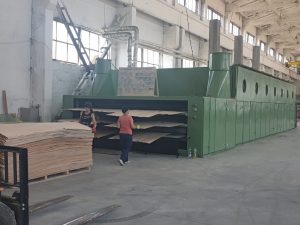 VENEER DRYING
VENEER DRYING
Soon after clipping we send veneer to a drier which prevents mould and other distortions or degradation, removes excessive moisture and prepares it for adhesive application and product fabrication. We use a jet-box conveyer-type drier. With this system veneer passes through a number of chambers where the hot air is blasted across it. Temperature and conveyor speeds are adjusted to ensure the veneer exits the dryer with the appropriate moisture content and suitable quality. The target moisture range is 6 – 10%.
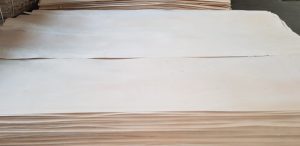 VENEER GRADING
VENEER GRADING
After drying, we sort and grade veneer sheets diligently considering consumer requirements and the product purpose. Grade criteria include natural wood features or process-induced defects caused when peeling or handling the veneer. Our veneer stock is divided into four A, B, C and D grades where the best grade class is ‘A’ and subsequent grades reflect lower quality veneers.
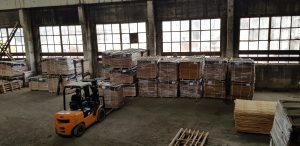 VENEER STORAGE
VENEER STORAGE
The ready-made veneers are carefully stored on pallets into appropriate lots and wrapped in film to prevent them from being contaminated by dust and any other contaminants. Each lot is marked with a number of sheets inside, the length, width and thickness of veneers and a grade.
 Veneer stock area
Veneer stock area


